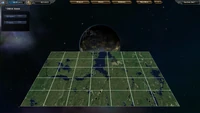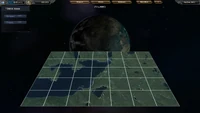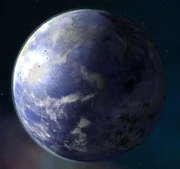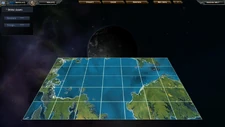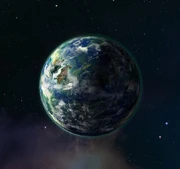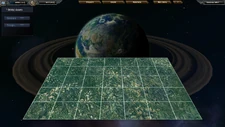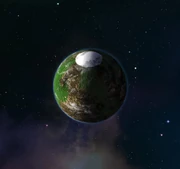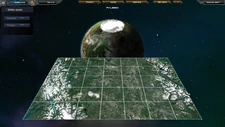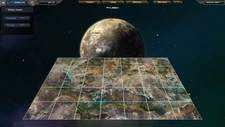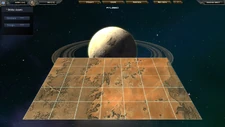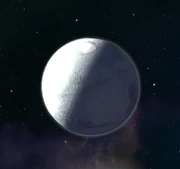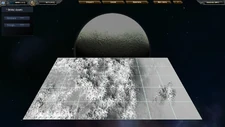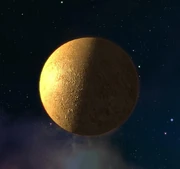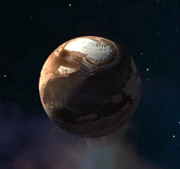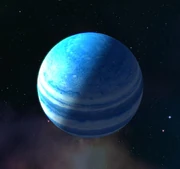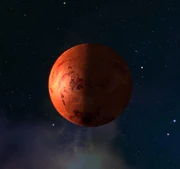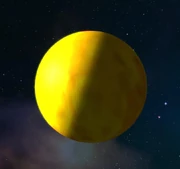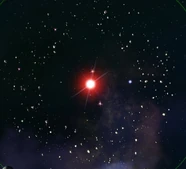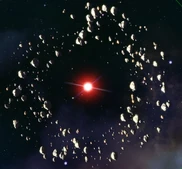Planets and other objects (such as asteroids) that can be found in the StarDrive universe are listed below. Colonies are established on planets and they allow you to start extracting resources to bolster your economy. Planets have varying levels of quality which affects their level of resource generation and the maximum population they can support. Planets may also experience random events that could change their resource ratings.
Population / Fertility / Richness Defined:[]
Population[]
A colony's population is a primary indicator of its economic strength. The higher a colony's population , the more colonists are available to divide between the tasks of farming, production and research.
Population grows as a percentage of itself every turn (1%), which means small colonies will grow very slowly compared to larger ones. To increase your population growth at a colony, build some freighters and assign them the "Transport Colonists" mission. These freighters will then bring colonists from your high population worlds to your lower population worlds.
Fertility[]
The fertility number indicates how much food this planet will produce per assigned colonists per turn (a turn is .1 Star Date), before racial bonuses and buildings.
Richness[]
A planet's mineral richness indicates production per assigned colonist per turn, before racial bonuses and buildings.
Colonisable Planets[]
Each planet is placed into a Class, based off of it geographical features. They are listed below:
Terran[]
A temperate or warm world with forests, grasslands, deserts and a general mix of habitable terrain, in addition to a diverse biosphere and breathable atmosphere. Terran planets can usually support a high population, although there are various Traits that can affect this such as Polluted Homeworld.
Oceanic[]
Oceanic planets are mostly covered in warm oceans and shallow seas. Ideal for food production but can only support small populations due to tiny amount of habitable land.
Swamp[]
Planets whose land area is mostly low lying swamps and bayous. Vibrant biospheres with exotic wildlife.
Tundra[]
A planet with a breathable atmosphere and active biosphere that is experiencing extreme cooling effects and extensive glaciation.
Steppe[]
A planet of rocky, craggy steppe, semi-arid land and grassland. Colonists may be able to eke out a harsh living here.
Desert[]
Planets with a breathable atmosphere but little moisture. Temperatures tend to soar during the day and plummet at night. Desert planets cannot support high populations and will have many uninhabitable squares.
Ice[]
Frigid worlds with temperatures close to absolute zero, entirely covered in a huge, planet-wide ice sheet. They may or may not have a few habitable squares. Ice planets with no habitable squares will require biospheres to be placed down before other structures can be built.
Barren[]
Cold worlds with little or no atmosphere, blasted by solar radiation. Barren planets are able to be colonized from the start, but are essentially useless until Biospheres are researched, as all their land squares are unusable without a biosphere placed there first.
Later, Terraformers can be placed on uninhabitable squares and will gradually transform the planet into a more desirable world.
Uncolonisable Planets[]
Gas Giants[]
Huge, swirling balls of gas that are highly magnetic. There are plans to be able to build orbital gas-extraction platforms around these at a later stage in development.
Volcanic Planets[]
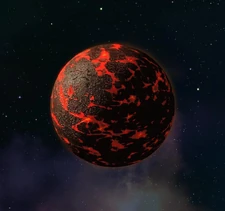
Volcanic planet
Superheated rocky worlds with atmospheres full of toxic gas, many volcanoes, much seismic activity and rivers of molten rock flowing across the surface.
Asteroids and Asteroid Belts[]
Cold dead rocks floating in outer space with no atmosphere.
There are plans to be able to establish mining bases on these at some later point.
Terraforming[]
Terraforming Mechanics[]
You could improve climate of a planet using a Terraformer building. Currently there is no special value for climate state on a planet – instead there are different climate types (barren, oceanic etc.). All the calcualations, however, are made using the Fertility rating of a planet.
After the terraformer is built, Fertility rating of a planet will start to improve at the rate of +.005 fertility per turn per one terraformer, until fertility rating reaches 1. With each change in climate type a seemingly random amount of tiles will become usable and the maximum population will also change randomly for the better (most of the time).
As fertility rating will increase, the planet climate will change, until it reaches Tier 1 climate – Terran or Oceanic, depending on planet type.
If a planet already have a Fertility rating of 1, but was not Tier 1 climate – terraforming will be impossible.
Terraforming Process[]
There are two “types” of climates – wet and dry, each of them have different terraforming path.
- Dry climates: Barren, Desert, Steppe, Tundra, Terran
- Wet climates: Ice, Swamp, Oceanic
As was mentioned earlier, the process of terraforming is a process of improving fertility rating of a planet. When fertility rating reaches certain values – climate on a planet changes:
| Fertility Rating | Dry climate | Wet climate |
|---|---|---|
| 0 | Barren/Desert | Ice |
| 0.1 | Desert | Ice |
| 0.2 | Desert | Ice |
| 0.3 | Desert | Swamp |
| 0.4 | Steppe | Swamp |
| 0.5 | Steppe | Swamp |
| 0.6 | Steppe/Tundra | Swamp |
| 0.7 | Tundra | Swamp |
| 0.8 | Tundra | Oceanic |
| 0.9 | Tundra | Oceanic |
| 1 | Terran | Oceanic |
Terraforming strategy []
The primary candidates for terraforming are ultra rich, rich and average barren and ice planets – if you are not playing cybernetic race. Colonize a planet, build a terraformer first and wait for a few turns in case of a barren planet or a little more if it is an ice planet. Then, when free tiles will appear – start improving your colony as you wish.
Once a planet had reached fertility rating 1 and became Tier 1 climate you can scrap terraformer, since the climate won't deteriorate by itself. It is still a good idea to keep it, however, if you don't have currency issues – in case of climate-changing events.
Another strategy for using a terraformer – to compensate -2 fertility impact of a Deep Core Mining, since terraformer always increase sets rating to 1. To maximize the effect you would need a planet with natural fertility of 1 or less (already terraformed of just poor on fertility) and richness rating no less than 2.5.
Once you found such a planet – colonize it, build terraformer and a set of basic production buildings. Then make sure your planet have 130 units of food, build a few terraformers and then – Deep Core Mining. Then maximize food production and wait for 10-15 turns. After your fertility rating will return to 1 – scrap all the terraformers.
The last usage of a terraformer is to improve planets that have more than 1 fertility rating and have less than a Tier 1 climate. This will be only reasonable if the targeted planet have more than 1 but less than 1.3 fertility rating and decent richness (2.5 or more).
That tactic is similar to the previous one – you need to build Deep Core Mining to drop fertility rating of a planet to zero. Then terraformers will increase it and will maximize climate level of a planet as well in process as well.

